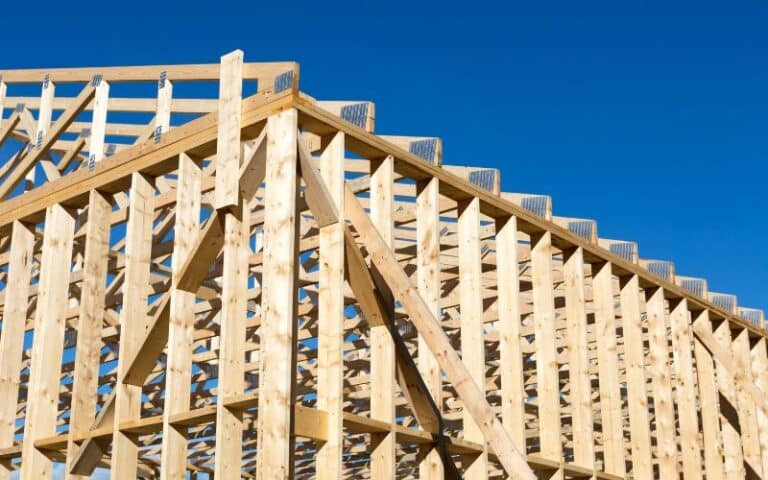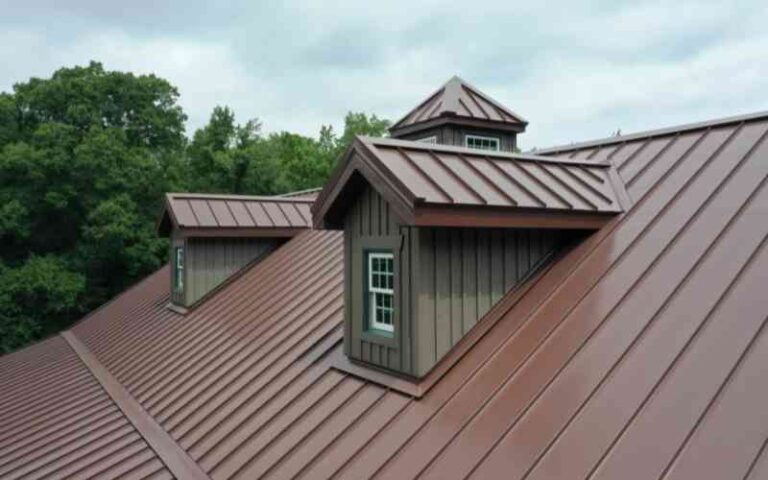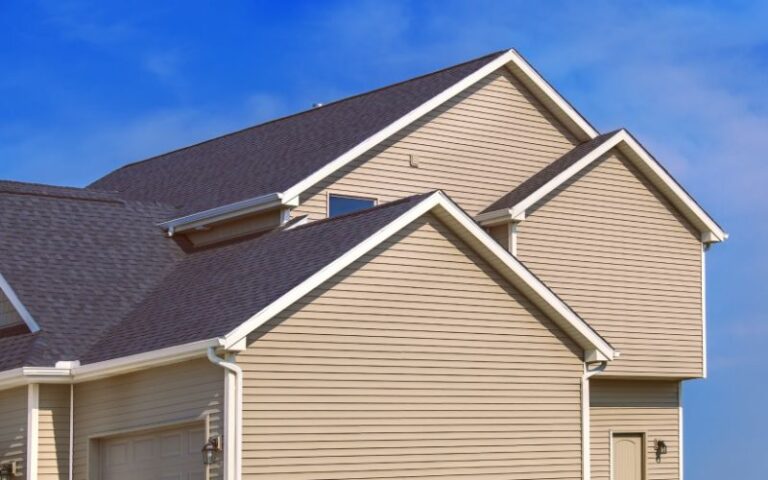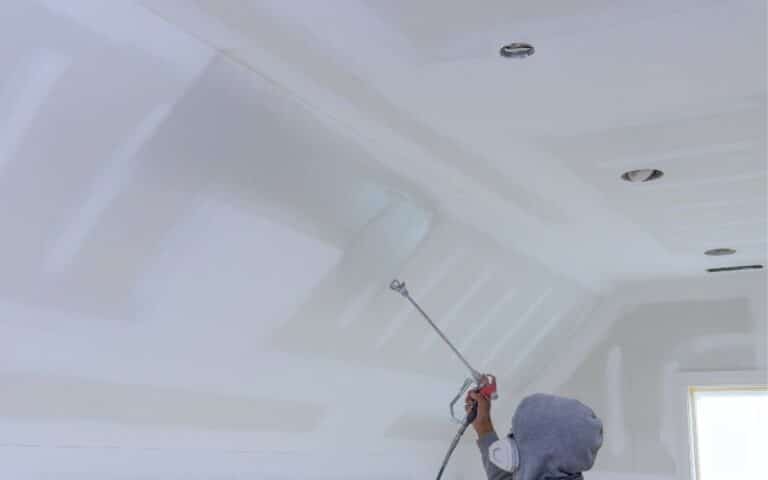Raccoons are highly adaptable animals in various environments, from the country to cities and suburbs.
As a homeowner, you may want to know if raccoons can climb up the side of your house.
Raccoons are excellent climbers, which means they may be able to scale your home’s exterior walls, which can be a bother to you.
This article will explain if raccoons can climb up the side of your house.
Raccoons can climb up the side of your house with their sharp claws. However, even with their claws, they cannot climb up metal and glass sides. Nevertheless, raccoons are adept at climbing and often do this to access attics or chimneys for food or shelter.
Ready for a Roofing Quiz?
Can Raccoons Climb up the Side of House?

Yes, raccoons can climb up the side of your house.
However, this depends on the surface of your house; if your walls are made of metal or glass, raccoons find it difficult to climb, but on other surfaces such as brick, wood, or stone, it isn’t difficult for the raccoon to climb on.
Raccoons are good climbers and can scale most walls and fences; however, they typically only climb vertical surfaces for food or shelter.
They won’t stay on the roof for any length of time because it doesn’t provide them with any protection from predators or humans.
As a result, you’ll often find them climbing down once they find what they’re looking for.
If a raccoon climbs up the side of your house, it’s more likely to happen if it’s in search of a warm shelter.
If openings are in your roof or siding, they might try to get inside, and you can make it difficult for them by capping vents and other openings.
Raccoons often climb up the sides of houses to get to roofs. Once on the roof, they can access chimneys, vents, and other openings to get into the house.
How Do Raccoons Get on Roofs?
Raccoons are excellent climbers. Their sharp claws help them grip onto surfaces, and their agile bodies allow them to maneuver well.
Occasionally, raccoons will climb up the downspout, gutter, and trees to get onto roofs. They may use debris or other objects to create a makeshift ladder.
Raccoons also have fairly dexterous front paws and may be able to use those to pull themselves up.
In addition, they have thick, strong claws and are incredibly flexible, so climbing is not a difficult feat for them. In addition, they have very strong back legs that allow them to jump quite high.
Raccoons may be able to climb trees and then jump from the tree onto your roof, and then use their strong back legs to jump and grab onto your shingles.
If there are any ledges or overhangs, they may be able to use those to get a foothold and pull themselves up.
Raccoons are also good climbers and may be able to scale the side of your house without any assistance.
Regardless of how they get there, once raccoons are on your roof, getting them down cannot be easy.
If a raccoon climbs onto your roof, you may be able to remove it yourself. But, first, try to figure out how it got onto your roof in the first place.
If you see a ladder or other object keeping it there, you can remove that object and then shoo it away or scare off the raccoon.
If you don’t see anything keeping it on your roof, try using water to scare it away. A hose can usually create enough noise to chase a raccoon away without harming it.
How Do You Stop Raccoons from Climbing Your House?
Raccoons are good climbers, and they can climb just about any surface. To stop raccoons from climbing your house, you first have to figure out how they’re getting onto your property.
Once you know how they’re getting in, you can take steps to block their access. Common entry points include chimneys, vents, unscreened windows, and holes in the foundation.
If raccoons are already on your property, you can try to scare them away with loud noises or bright lights.
If raccoons are using your roof to access your attic, it may be possible to prevent them from accessing your home.
Start by sealing off entry points on your roof, then install flashing around all chimneys and vents.
If raccoons are trying to get into a house through an unscreened window or door, installing metal screens is one of the most effective ways to keep them out.
Here are a few things you can do to prevent raccoons from climbing your house;
- Trim trees and shrubs so they don’t provide the raccoons with easy access to your roof.
- Install a chimney cap or screen.
- Repair any holes or damage in your roof, so raccoons can’t get in.
- Please ensure the lids on your trash cans fit tightly, and don’t leave food where raccoons can get to it.
- If you have a swimming pool, ensure there is no way for raccoons to climb into it. Fences are sometimes all that’s needed to keep them out.
- Install a trap door under your porch, leading down into a sealed container with steel mesh. That way, any young raccoons that manage to climb up onto your house will be unable to go back down again.
- In extreme cases, if all else fails, you may need to take more drastic measures and enlist the help of a professional wildlife expert to handle the problem.
Can Raccoons Eat Through Walls?
Yes, raccoons can eat through walls. However, this isn’t their usual mode of operation; they eat through walls when they are desperate, but it isn’t their usual style.
Raccoons have sharp claws and can scale most walls and fences, which they use instead of eating through walls.
However, given the right circumstances, such as food or water on the other side, a raccoon may try to scale a wall.
Also, if your home has cracks or holes in the exterior, a raccoon can get inside. Once inside, a raccoon can cause all sorts of damage, including chewing through walls.
As with most animals, raccoons are omnivores. They will eat meat and vegetables and even plant seeds when available.
However, their diet varies depending on where they live. It means some materials or walls are more likely to be eaten by raccoons than others—and some materials may not be readily edible.
How Do I Keep Raccoons off My Balcony?
If you want to keep raccoons off your balcony, there are some steps you can take by yourself before seeking the help of a professional.
In the table below are some steps to take to keep raccoons away from the balcony of your home.
| Guide | Details |
|---|---|
| Keep garbage cans sealed. | Raccoons love trash, so they’ll access your house to get it. So, ensure that you keep your garbage cans tightly sealed. |
| Eliminate food sources. | Raccoons access your house for food, so you must eliminate any food sources that might tempt them. |
| Eliminate all water sources. | Raccoons need water, so ensure you keep water sources covered properly, especially at night, to prevent raccoons. |
| Remove pet food. | If you have a pet, ensure their food is inaccessible as raccoons like it. |
| Scare tactic. | Try scaring the raccoons off with loud noises or bright lights. |
| Trim trees or shrubs. | Trim any trees or shrubs close to your balcony, giving the raccoons fewer places to climb. |
| Install a physical barrier. | Install a physical barrier, such as chicken wire, metal spikes, or wire mesh, around the perimeter of your balcony. |
| Spray with a solution that repels the raccoons. | Spray a solution of water and ammonia onto your balcony, as it will make your balcony an unpleasant place for raccoons to walk on. |
| Use sprinklers and motion-activated lighting. | Motion-activated sprinklers will deter raccoons from your balcony. It detects raccoons and sprays them with water. |
If you notice raccoon feces or urine around your home, it may indicate a den in your attic.
It can be dangerous for your health, as raccoons often carry roundworms and other parasites that are transmittable to humans.
Watch for scratching noises and nesting materials to determine if there’s a den in your attic.
Contact a wildlife control professional to handle the situation safely if you think there’s a den in your home.
It is the best option because you can’t harm or kill any raccoons that have found their way onto your balcony, as they are protected under federal law.
Your balcony should be safe from raccoons once you’ve addressed these issues.
Conclusion
Raccoons can climb up the side of your house for food or shelter. However, having them in your home isn’t good, and you can’t kill them because it’s against the law.
So, it would be best to prevent them from getting into your house by ensuring you don’t have food or water around. Also, trim trees close to your home.






